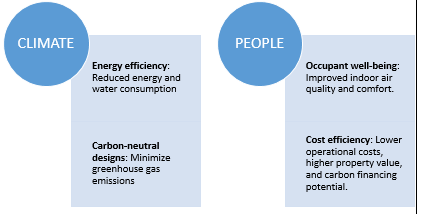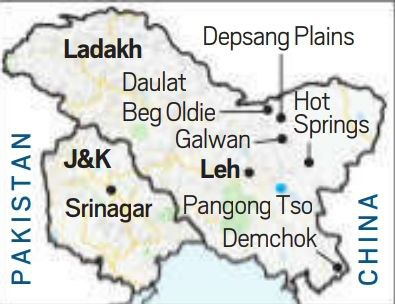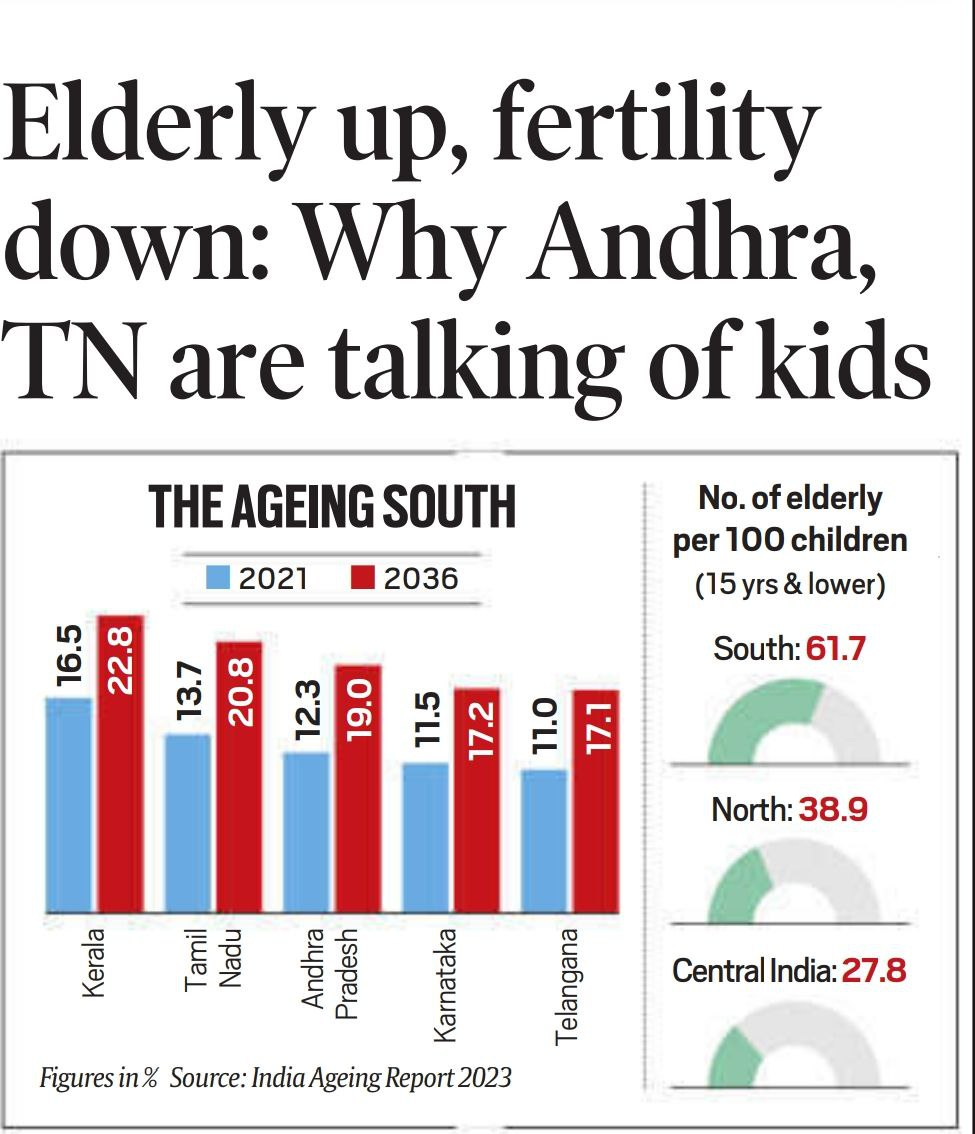Index:
- Secularism as Part of the Basic Structure of the Constitution
- High-Performance Buildings (HPBs) and Climate Goals
- Regulation of Minority Institutions and Secularism
- RBI's October 2024 Bulletin: State of the Economy
- Condition on LAC and Places in new
- Ageing south
- Other Headline in news
- Z-Morh Tunnel: A Strategic Lifeline
- The Population Question in South India
1. Secularism as Part of the Basic Structure of the Constitution
- Constitutional Framework and Secularism
CONTEXT: The Supreme Court (SC) reiterated that secularism is an indelible and core part of the Basic Structure of the Constitution.
- Basic Structure Doctrine: This doctrine was established in the Keshavananda Bharati case (1973), where the court held that certain features of the Constitution, including secularism, cannot be altered by constitutional amendments.
- Preamble of the Constitution: Originally, India was described as a “Sovereign, Democratic Republic”. The words “socialist” and “secular” were added later.
- 42nd Constitutional Amendment (1976)
- Context: Introduced by the Indira Gandhi government during the Emergency (1975-1977), through the 42nd Amendment.
- Changes Made:
- Added “socialist” and “secular” between “sovereign” and “democratic”.
- Replaced “unity of the nation” with “unity and integrity of the nation”.
- Retrospective Effect: The amendment was given retrospective effect from November 26, 1949 (the date of the adoption of the Constitution).
- Challenges and Opposition to the Amendment
- Petition by Subramanian Swamy & Others: The petition challenged the insertion of “socialist” and “secular” into the Preamble, arguing it restricts personal liberty and individualism.
- Argument on Socialism:
- Petitioners claimed that the term socialism was curtailing personal liberty.
- SC’s Rebuttal: Justice Sanjiv Khanna noted that socialism, in the Indian context, should not be interpreted like in Western countries. Instead, it implies equality of opportunity and fair distribution of wealth.
- Secularism as a Core Feature of the Constitution
- Judiciary’s Position: The SC clarified that secularism has always been part of the Constitution’s Basic Structure, inferred from rights like equality and values such as fraternity.
- Advocate Ashwini Upadhyay’s Argument: Upadhyay did not oppose the terms “socialist” and “secular” but contested their introduction via the 42nd Amendment.
Advocate Sriram Parakkat’s View: Representing CPI leader Binoy Viswam, Parakkat remarked that though the 42nd Amendment aimed to curb judicial powers, the retention of the secular and socialist elements in the Preamble was beneficial.
2. High-Performance Buildings (HPBs) and Climate Goals
- Introduction to High-Performance Buildings (HPBs)
- Definition: High-Performance Buildings (HPBs) are designed to address both climate challenges and urban sustainability
- Global Policies Promoting HPBs
- European Union (EU): Green Deal (2050 Climate Neutrality Goal): Mandates energy-efficient buildings and retrofitting.
- Germany: KfW Bank: Offers low-interest loans for energy-efficient projects.
- Denmark: BR18 Building Codes: Strict sustainability incentives.
- United States (US): Energy Star & LEED Certifications: Encourage energy efficiency with tax credits for green buildings.
- Role of Construction Industry in Climate Change
- Global Impact: Construction contributes to 39% of energy-related carbon dioxide emissions
- Energy Efficiency Potential: With appropriate policies and incentives, reducing energy consumption becomes both technically feasible and financially viable.
- India’s Initiatives for High-Performance Buildings
- National Action Plan on Climate Change (NAPCC): Promotes energy-efficient buildings as part of India’s climate mitigation efforts.
- Energy Conservation Building Code (ECBC): Developed by the Bureau of Energy Efficiency (BEE) to reduce building energy demands by up to 30%.
- Green Rating for Integrated Habitat Assessment (GRIHA): Focuses on sustainable building practices. Over 3,000 projects are registered under GRIHA.
- Indian Green Building Council (IGBC): Promotes energy-efficient designs with over 14,000 certified projects.
- Incentives in Cities: Hyderabad, Noida, and Pune offer higher floor area ratios for ECBC-compliant buildings, contributing to a rise in green projects.
- Target for Net-Zero Buildings: BEE aims to achieve 30% net-zero buildings by 2030.
- Examples in India:
- Infosys campuses: Integrated energy-efficient designs reduced energy consumption by 45%.
- Green-certified buildings: Properties like ITC Green Centre, TCS Siruseri IT Park, and Nirlon Knowledge Park benefit from higher property values and demand.
- Financing Mechanisms for HPBs
- Carbon Financing:
- Carbon Credits: Tradable permits that allow companies to offset emissions.
- Key Regions: Carbon pricing in the EU and China creates financial incentives for energy-efficient HPBs.
- Green Bonds:
- In 2020, $269.5 billion worth of green bonds were issued globally.
- Attract investors interested in projects that align with sustainability goals.
- Global Climate Funds:
- Organizations like the World Bank and the Green Climate Fund provide financial support for HPB projects.
- India’s Approach:
Green bonds and carbon credits play a role in financing HPBs, making them more affordable for developers.
3. Regulation of Minority Institutions and Secularism
- Introduction
- Key Issue: Whether laws regulating institutions run by religious or linguistic minorities breach the principle of secularism.
- The Supreme Court addressed the concern in the context of Madrasas in Uttar Pradesh under the Uttar Pradesh Board of Madrasa Education Act, 2004.
- Supreme Court’s Observations
- Secularism and Regulation:
- Chief Justice of India (CJI) Y. Chandrachud stated that laws regulating minority institutions do not breach secularism by default.
- A law regulating such institutions does not automatically offend secular principles merely because it targets a particular community’s educational institutions.
- Case Background
- Allahabad High Court Ruling (2004 Act):
- The High Court struck down the Uttar Pradesh Board of Madrasa Education Act, 2004, declaring it violative of secularism.
- The court had ordered the transfer of students from madrasas to regular schools.
- The petitioners argued this verdict affected 17 lakh students across 16,000 madrasas in the state.
- Chief Justice’s Rationale
- Educational Regulation: The CJI cited the example of the Hindu Religious Endowments and Charitable Institutions Act, which is present across many states to ensure the proper administration of religious institutions.
- Broad-based Education: The Supreme Court emphasized that minority-run institutions, particularly those receiving government aid, could be regulated by the State to ensure quality education.
The regulation aimed to ensure that children attending these institutions receive a broad-based education to become worthy citizens.
4. RBI's October 2024 Bulletin: State of the Economy
- India’s Growth Outlook
- GDP Growth: India’s GDP growth for the July-September 2024 quarter is projected at 8%, slightly below the Reserve Bank of India’s (RBI) earlier projection of 7%.
- This follows a 7% growth in the April-June 2024 quarter, marking a five-quarter low, mainly due to slower growth in agriculture, government spending, and services.
- Geopolitical Tensions: Despite recent geopolitical tensions, India’s growth outlook remains robust, driven by strong domestic engines.
- Factors Affecting Growth
- Temporary Slowdown: High-frequency indicators suggest a slackening of momentum in the second quarter of 2024-25. Contributing factors include:
- Unusual weather conditions: Heavy rains in August and September.
- Seasonal impact: Lower activity during Pitru Paksha.
- Slower GST collections, automobile sales, bank credit growth, and manufacturing activity (PMI).
- Recovery Signs: Festival demand and improved consumer confidence are expected to lift aggregate demand, with a boost from a better agricultural outlook and rural demand.
- Investment and Corporate Sector Outlook
- Private Investment: Expected to pick up in response to rising consumption demand and business optimism. However, corporate investments in plants, machinery, and net fixed assets have remained subdued.
- Government Capex Impact: The crowding-in effect of government capital expenditure (capex) is delayed, but the RBI notes the growing sentiment that private sector investment is critical for improving competitiveness.
- Corporate Strategy: Companies are focusing on preserving margins by reducing spending on raw materials and labor rather than aggressively pushing for capital expenditure.
- External Sector and Global Trade
- Global Trade: The WTO goods trade barometer for September 2024 indicates a recovery in global goods trade, despite challenges.
- India’s External Sector: Supported by strong macroeconomic fundamentals and high foreign exchange reserves, India’s external sector remains resilient in the face of rising geopolitical tensions.
- Export Opportunities: The strengthening of global trade could provide a boost to India’s exports, though geopolitical risks remain a concern.
- Agricultural Outlook
- Monsoon Impact: Above-normal monsoon rainfall is expected to enhance kharif production and reservoir storage, improving prospects for the Rabi season.
La Niña Impact: The potential development of La Niña conditions in the post-monsoon season is expected to bring beneficial precipitation, though excessive rainfall poses risks to standing crops.









